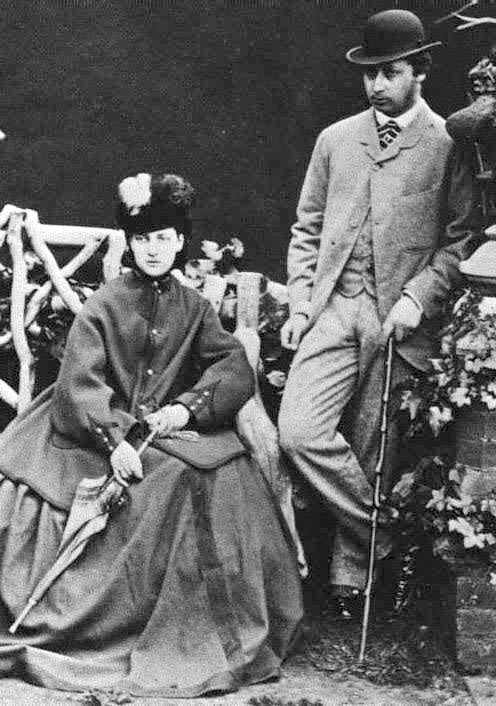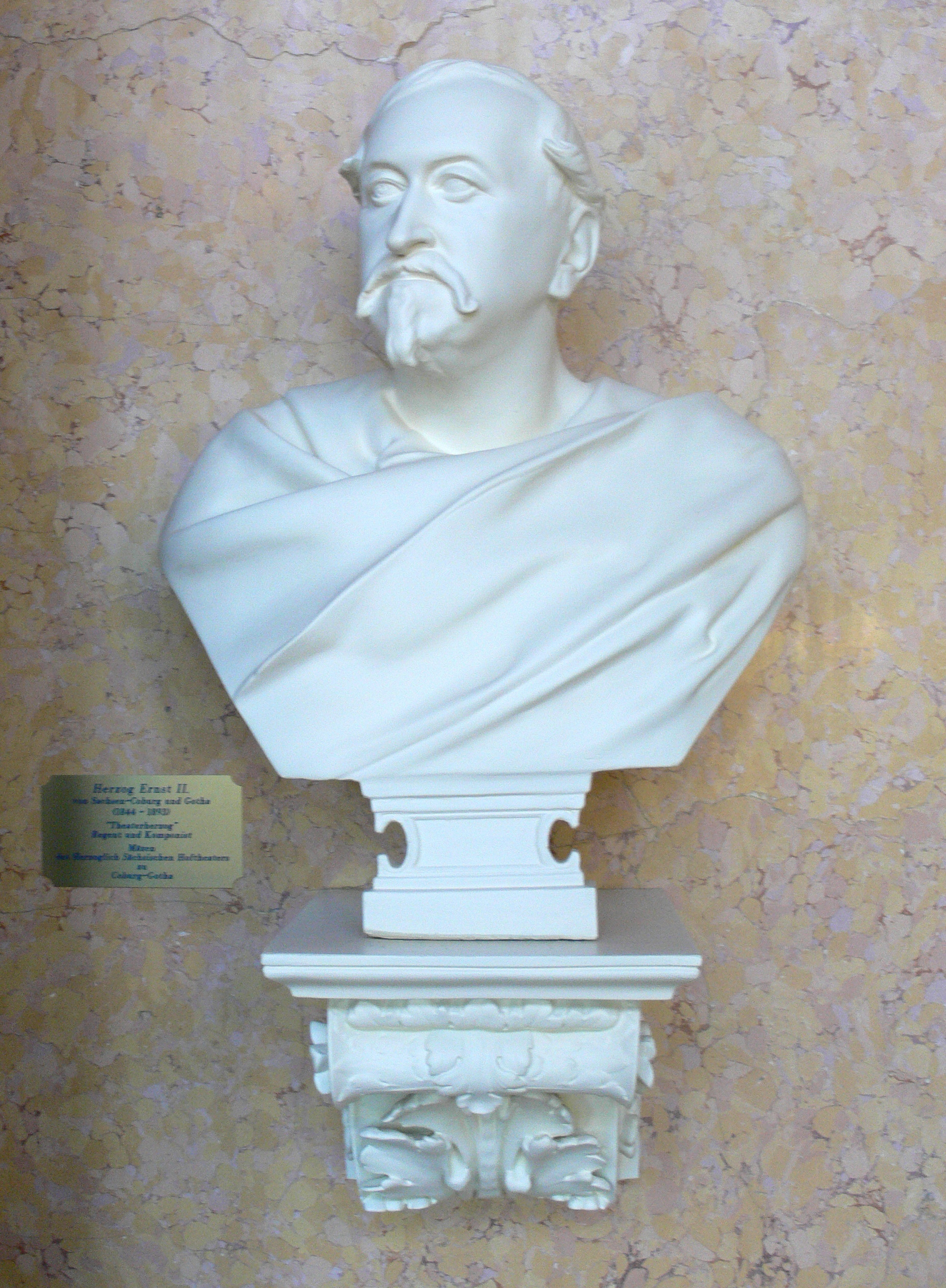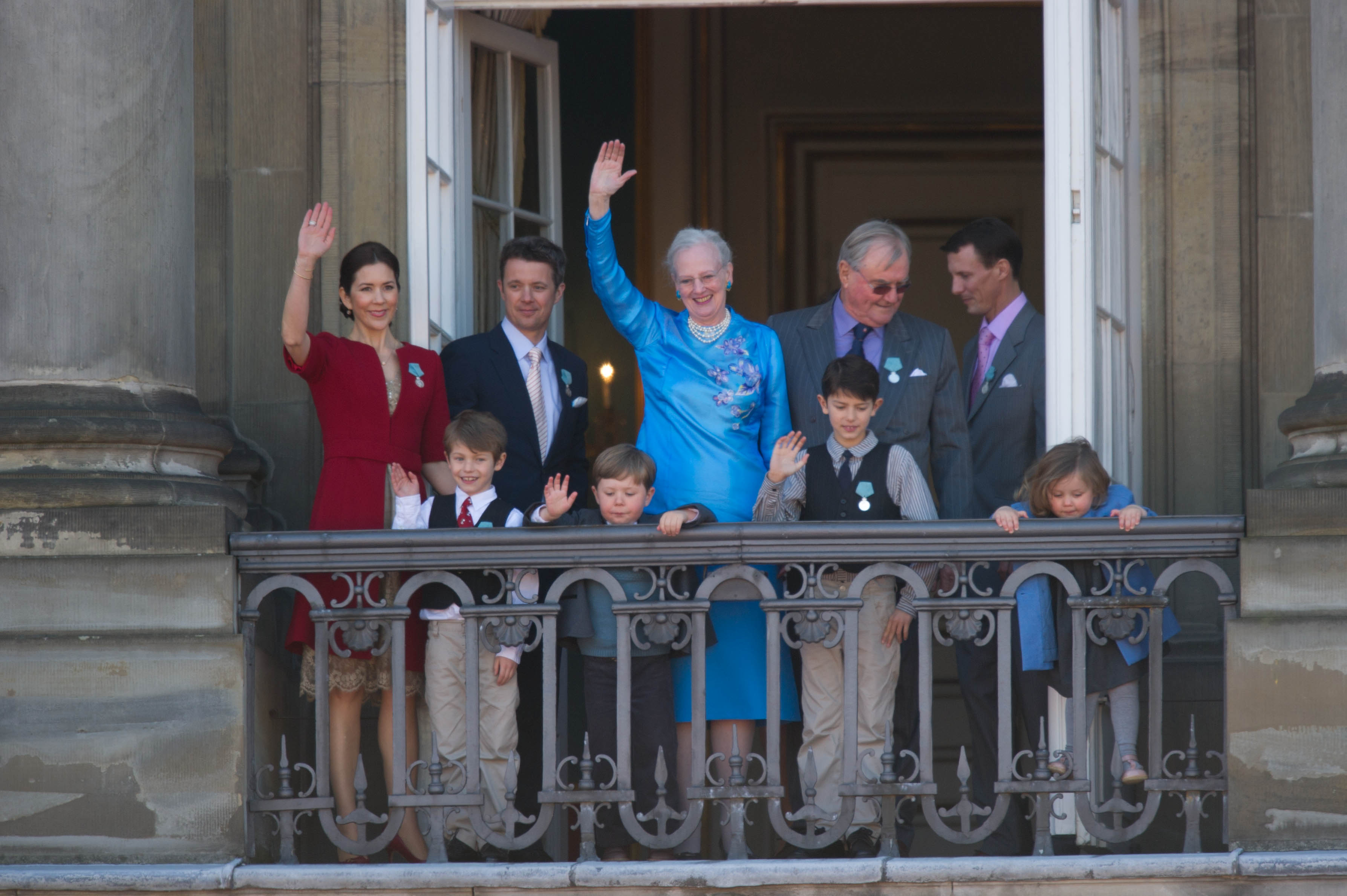|
Wedding Of Albert Edward, Prince Of Wales, And Princess Alexandra Of Denmark
The wedding of Albert Edward, Prince of Wales, and Princess Alexandra of Denmark took place on 10 March 1863 at St. George's Chapel, Windsor Castle. It was the first royal wedding to take place at St. George's, and the last wedding of a prince of Wales until Prince Charles and Lady Diana Spencer's 1981 wedding. Albert Edward became King Edward VII in 1901. Engagement Before his marriage, Prince Albert Edward, known as "Bertie" amongst his family, garnered a reputation as a philandering prince, and his irresponsibility was greatly detested by his parents, Queen Victoria and Albert, Prince Consort. They sought to put a stop to his affairs by means of marriage and thereby bring stability to his life. In 1858, the Queen and Prince Albert began the process of finding their son a suitable bride, preferable a German Protestant. The Prince's older sister, Victoria, Princess Royal (by then Crown Princess of Prussia), aided the Queen in drafting a list of potential brides, the fifth ... [...More Info...] [...Related Items...] OR: [Wikipedia] [Google] [Baidu] |
Windsor Castle
Windsor Castle is a royal residence at Windsor in the English county of Berkshire. It is strongly associated with the English and succeeding British royal family, and embodies almost a millennium of architectural history. The original castle was built in the 11th century, after the Norman invasion of England by William the Conqueror. Since the time of Henry I (who reigned 1100–1135), it has been used by the reigning monarch and is the longest-occupied palace in Europe. The castle's lavish early 19th-century state apartments were described by early 20th century art historian Hugh Roberts as "a superb and unrivalled sequence of rooms widely regarded as the finest and most complete expression of later Georgian taste".Hugh Roberts, ''Options Report for Windsor Castle'', cited Nicolson, p. 79. Inside the castle walls is the 15th-century St George's Chapel, considered by the historian John Martin Robinson to be "one of the supreme achievements of English Perpe ... [...More Info...] [...Related Items...] OR: [Wikipedia] [Google] [Baidu] |
Typhoid Fever
Typhoid fever, also known as typhoid, is a disease caused by '' Salmonella'' serotype Typhi bacteria. Symptoms vary from mild to severe, and usually begin six to 30 days after exposure. Often there is a gradual onset of a high fever over several days. This is commonly accompanied by weakness, abdominal pain, constipation, headaches, and mild vomiting. Some people develop a skin rash with rose colored spots. In severe cases, people may experience confusion. Without treatment, symptoms may last weeks or months. Diarrhea may be severe, but is uncommon. Other people may carry the bacterium without being affected, but they are still able to spread the disease. Typhoid fever is a type of enteric fever, along with paratyphoid fever. ''S. enterica'' Typhi is believed to infect and replicate only within humans. Typhoid is caused by the bacterium ''Salmonella enterica'' subsp. ''enterica'' serovar Typhi growing in the intestines, peyers patches, mesenteric lymph nodes, spleen, liver ... [...More Info...] [...Related Items...] OR: [Wikipedia] [Google] [Baidu] |
Charles Longley
Charles Thomas Longley (28 July 1794 – 27 October 1868) was a bishop in the Church of England. He served as Bishop of Ripon, Bishop of Durham, Archbishop of York and Archbishop of Canterbury from 1862 until his death. Life He was born at Rochester, Kent, the fifth son of the late John Longley, Recorder of Rochester, and educated at Westminster School and Christ Church, Oxford, where he matriculated in 1812, graduating B.A. 1815 (M.A. 1818), B.D. & D.D. 1829. At Christ Church, Longley was reader in Greek 1822, tutor and censor 1825–8, and proctor 1827. He was ordained in 1818, and was appointed vicar of Cowley, Oxford, in 1823. In 1827, he received the rectory of West Tytherley, Hampshire, and two years later he was elected headmaster of Harrow School. He held this office until 1836, when he was consecrated bishop of the new see of Ripon. In 1856 he became Bishop of Durham, and in 1860 he became Archbishop of York. In 1862, he succeeded John Bird Sumner as Archbishop of Ca ... [...More Info...] [...Related Items...] OR: [Wikipedia] [Google] [Baidu] |
Ernest II, Duke Of Saxe-Coburg And Gotha
Ernest II (german: Ernst August Karl Johann Leopold Alexander Eduard, link=no; 21 June 181822 August 1893) was Duke of Saxe-Coburg and Gotha from 29 January 1844 to his death in 1893. He was born in Coburg to Ernest I, Duke of Saxe-Coburg-Saalfeld, and Princess Louise of Saxe-Gotha-Altenburg. His father became Duke of Saxe-Coburg and Gotha (as Ernest I) in 1826 through an exchange of territories. In 1842, Ernest married Princess Alexandrine of Baden in what was to be a childless marriage. Two years later, he became Duke of Saxe-Coburg and Gotha when his father died. Ernest supported the German Confederation in the Schleswig-Holstein Wars against Denmark, sending thousands of troops and becoming the commander of a German corps; he was instrumental in the 1849 victory at the battle of Eckernförde against Danish forces. After King Otto of Greece was deposed in 1862, the British government put Ernest's name forward as a possible successor. Negotiations concerning this failed for vari ... [...More Info...] [...Related Items...] OR: [Wikipedia] [Google] [Baidu] |
Danish Royal Family
The Danish royal family is the dynastic family of the monarch. All members of the Danish royal family except Queen Margrethe II hold the title of ''Prince/Princess of Denmark''. Dynastic children of the monarch and of the heir apparent are accorded the style of ''His/Her Royal Highness'', while other members of the dynasty are addressed as ''His/Her Highness''. The Queen is styled ''Her Majesty''. The Queen, her siblings and her descendants belong to the House of Glücksburg, which is a branch of the Royal House of Oldenburg. The Queen's children and male-line descendants also belong agnatically to the family de Laborde de Monpezat, and were given the concurrent title ''Count/Countess of Monpezat'' by royal decree on 30 April 2008. The Danish royal family receives remarkably high approval ratings in Denmark, ranging between 82% and 92%. Main members The Danish royal family includes: * The Queen (the monarch) ** The Crown Prince and Crown Princess (the Queen's son and daughter ... [...More Info...] [...Related Items...] OR: [Wikipedia] [Google] [Baidu] |
William Powell Frith - The Marriage Of The Prince Of Wales, 10 March 1863
William is a male given name of Germanic origin.Hanks, Hardcastle and Hodges, ''Oxford Dictionary of First Names'', Oxford University Press, 2nd edition, , p. 276. It became very popular in the English language after the Norman conquest of England in 1066,All Things William"Meaning & Origin of the Name"/ref> and remained so throughout the Middle Ages and into the modern era. It is sometimes abbreviated "Wm." Shortened familiar versions in English include Will, Wills, Willy, Willie, Bill, and Billy. A common Irish form is Liam. Scottish diminutives include Wull, Willie or Wullie (as in Oor Wullie or the play ''Douglas''). Female forms are Willa, Willemina, Wilma and Wilhelmina. Etymology William is related to the given name ''Wilhelm'' (cf. Proto-Germanic ᚹᛁᛚᛃᚨᚺᛖᛚᛗᚨᛉ, ''*Wiljahelmaz'' > German ''Wilhelm'' and Old Norse ᚢᛁᛚᛋᛅᚼᛅᛚᛘᛅᛋ, ''Vilhjálmr''). By regular sound changes, the native, inherited English form of the name should b ... [...More Info...] [...Related Items...] OR: [Wikipedia] [Google] [Baidu] |
London
London is the capital and largest city of England and the United Kingdom, with a population of just under 9 million. It stands on the River Thames in south-east England at the head of a estuary down to the North Sea, and has been a major settlement for two millennia. The City of London, its ancient core and financial centre, was founded by the Romans as '' Londinium'' and retains its medieval boundaries.See also: Independent city § National capitals The City of Westminster, to the west of the City of London, has for centuries hosted the national government and parliament. Since the 19th century, the name "London" has also referred to the metropolis around this core, historically split between the counties of Middlesex, Essex, Surrey, Kent, and Hertfordshire, which largely comprises Greater London, governed by the Greater London Authority.The Greater London Authority consists of the Mayor of London and the London Assembly. The London Mayor is distinguished fr ... [...More Info...] [...Related Items...] OR: [Wikipedia] [Google] [Baidu] |
Royal Train
A royal train is a set of railway carriages dedicated for the use of the monarch or other members of a royal family. Most monarchies with a railway system employ a set of royal carriages. Australia The various government railway operators of Australia have operated a number of royal trains for members of the Royal Family on their numerous tours of the country. Austria-Hungary The imperial and royal court used the ''k.u.k. Hofsalonzug'' (Imperial and Royal Court Saloon Train). Various versions existed under the rule of Emperor Franz Joseph I of Austria. Many of the cars were built by Ringhoffer in Bohemia. The cars were operated and maintained by the Imperial Royal Austrian State Railways. Two cars have survived, one is the dining car kept at the Technical Museum in Prague, and the other is the car of Empress Elisabeth of Austria, which is kept at the Technical Museum in Vienna. Belgium Historic use Some of the historic royal coaches are still preserved, two of which a ... [...More Info...] [...Related Items...] OR: [Wikipedia] [Google] [Baidu] |
Kent
Kent is a county in South East England and one of the home counties. It borders Greater London to the north-west, Surrey to the west and East Sussex to the south-west, and Essex to the north across the estuary of the River Thames; it faces the French department of Pas-de-Calais across the Strait of Dover. The county town is Maidstone. It is the fifth most populous county in England, the most populous non-Metropolitan county and the most populous of the home counties. Kent was one of the first British territories to be settled by Germanic tribes, most notably the Jutes, following the withdrawal of the Romans. Canterbury Cathedral in Kent, the oldest cathedral in England, has been the seat of the Archbishops of Canterbury since the conversion of England to Christianity that began in the 6th century with Saint Augustine. Rochester Cathedral in Medway is England's second-oldest cathedral. Located between London and the Strait of Dover, which separates England from mainla ... [...More Info...] [...Related Items...] OR: [Wikipedia] [Google] [Baidu] |
Gravesend
Gravesend is a town in northwest Kent, England, situated 21 miles (35 km) east-southeast of Charing Cross (central London) on the Bank (geography), south bank of the River Thames and opposite Tilbury in Essex. Located in the diocese of Rochester, it is the administrative centre of the Gravesham, Borough of Gravesham. Its geographical situation has given Gravesend strategic importance throughout the maritime history, maritime and History of communication, communications history of South East England. A Thames Gateway commuter town, it retains strong links with the River Thames, not least through the Port of London Authority Pilot Station and has witnessed rejuvenation since the advent of High Speed 1 rail services via Gravesend railway station. The station was recently refurbished and now has a new bridge. Toponymy Recorded as Gravesham in the Domesday Book of 1086 when it belonged to Odo, Earl of Kent and Roman Catholic Diocese of Bayeux, Bishop of Bayeux, the half-broth ... [...More Info...] [...Related Items...] OR: [Wikipedia] [Google] [Baidu] |
HMY Victoria And Albert (1855)
HMY ''Victoria and Albert'', a steamer launched on 16 January 1855, was a royal yacht of the sovereign of the United Kingdom until 1900, owned and operated by the Royal Navy. She displaced 2,390 tons, and could make on her paddles. There were 240 crew. Career Queen Victoria made her first cruise in her on 12 July 1855. On 3 June 1859, ''Victoria and Albert'' ran aground in the Scheldt whilst on a voyage from Gravesend, Kent to Antwerp, Belgium. Queen Victoria left the ship to Empress Elisabeth of Austria for her cruise to Madeira in 1860. The ship was used by Prince Arthur on the occasion of his visit to Heligoland in 1872.Rüger, p. 68. Queen Victoria sent the ship to Vlissingen to ferry Crown Prince Friedrich Wilhelm of Germany accompanied by his wife Victoria, their three youngest daughters, Professor Gerhardt, two court officials and two ladies-in-waiting across the Channel to be treated of his throat illness in England by Dr. Mackenzie. They alighted in Sheerne ... [...More Info...] [...Related Items...] OR: [Wikipedia] [Google] [Baidu] |








